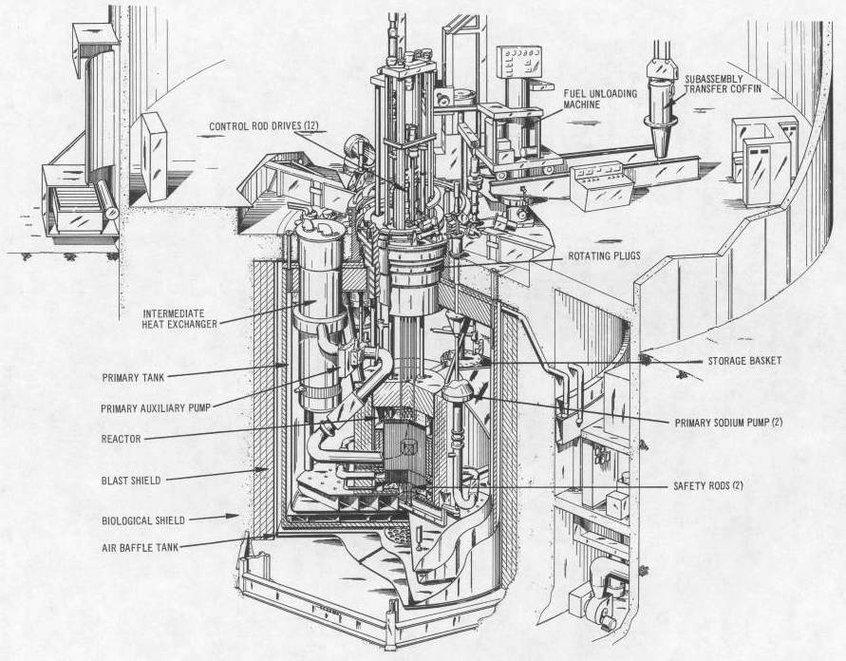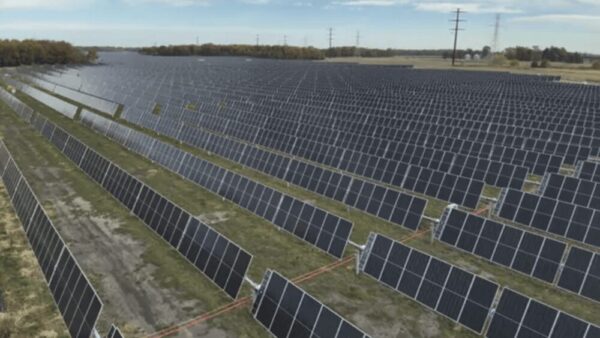It was announced yesterday that GE Hitachi Nuclear Energy (GEH) is to team up with US specialist Advanced Reactor Concepts (Arc Nuclear) to work on its advanced small modular reactor (aSMR).
GEH, which is 40/60 joint venture between Hitachi and GE, signed a memorandum of understanding to work on the development and licensing of the design, which is based on fourth generation technology. As yet, no Gen IV reactor has been brought to market.
The two will aim to produce a joint design aimed at gaining regulatory approval and first deployment in Canada.
Both companies have been working on a similar sodium-cooled fast-neutron design based on a small research reactor built by the University of Chicago’s Argonne National Laboratory in the sixties.
We are confident that this collaboration with GEH will more rapidly bring affordable carbon free, utility-scale nuclear power to the evolving energy market landscape– Don Wolf, Arc Nuclear
GEH has been working on the 311MW PRISM reactor, which has been focused on closing the fuel cycle by using, and consuming, the transuranic elements that make up high-level nuclear waste. The company argues that this allows it to derive 100 times more energy from nuclear fuel than a Gen III light water reactor.
Arc Nuclear was set up in 2006 to commercialise the ARC-100, a 100MW SMR concept with the unique selling point of a 20-year refuelling cycle, compared with PRISM’s 12-24 months.
Both reactors were based on Experimental Breeder Reactor II, or EBR II, which Argonne operated between 1965 and 1994.
GEH argues that this lengthy research period means that “no other US fast spectrum reactor technology has more test data, design maturity, programmatic information, or operational experience”.

A cutaway of the EBR-II
Don Wolf, chairman and chief executive of Arc Nuclear, said in a press statement: “We have a heritage of sodium fast reactor experience that includes key senior scientists and engineers from the EBR-II prototype program – technical leaders involved in developing and demonstrating the fast reactor foundational technology within the US Department of Energy.
“We are confident that this collaboration with GEH will more rapidly bring affordable carbon free, utility-scale nuclear power to the evolving energy market landscape.”
The companies added that the alliance would help them to compete with about 90 other SMR designs making their way to markets around the world.
SMRs are beginning to emerge as an alternative to conventional nuclear plants owing to their claims to be cheaper, less risky and more convenient.
Countries such as the UK are looking to deploy SMRs at the first opportunity. Indeed, the UK was one of the likely customers for PRISM given the amount of plutonium left over from its first-generation Magnox programme – enough, it has been said, to run the country’s grid for 500 years.
Meanwhile, Babcock & Wilcox and Bechtel have decided to dissolve Generation mPower, the joint venture that was the early frontrunner in the race to develop an American SMR.
Generation mPower was 90% owned by a subsidiary of Babcock, with Bechtel responsible for the design of the containment buildings and the internal steam system.
On 3 March, Bechtel notified Babcock that it was unable to secure sufficient funding to continue the programme and was invoking a contractual clause allowing it to terminate.
Top image: The new Energy Sciences Building at the Argonne National Laboratory (ANL)
Further Reading:
Comments
Comments are closed.







This article starts with
GEH has been working on the 311MW PRISM reactor, which has been focused on closing the fuel cycle by using, and consuming, the transuranic elements that make up high-level nuclear waste. The company argues that this allows it to derive 100 times more energy from nuclear fuel than a Gen III light water reactor
Which sounds surprisingly like the promises made by Transatomics, another venture capitalist darling with clever presentable MIT doctorates at the helm. Except the college students have gotten schooled, and MIT profs have pointed out they got the fundamental science wrong. Now they have withdrawn their claim that waste will be burned and instead of 75 times as efficient as conventional reactors, they are hoping for twice as efficient. Is it only a question of time before Hatachi/GE get the same lesson?
It is worth pointing out, buried in the article that Bechtel is dropping out of teh SMR race, for lack of investors. Similar to Westinghouse departure from SMR for lack of customers. Similar to B&W dropping out of the SMR game.
Yes, sir – bright future ahead for SMRs.